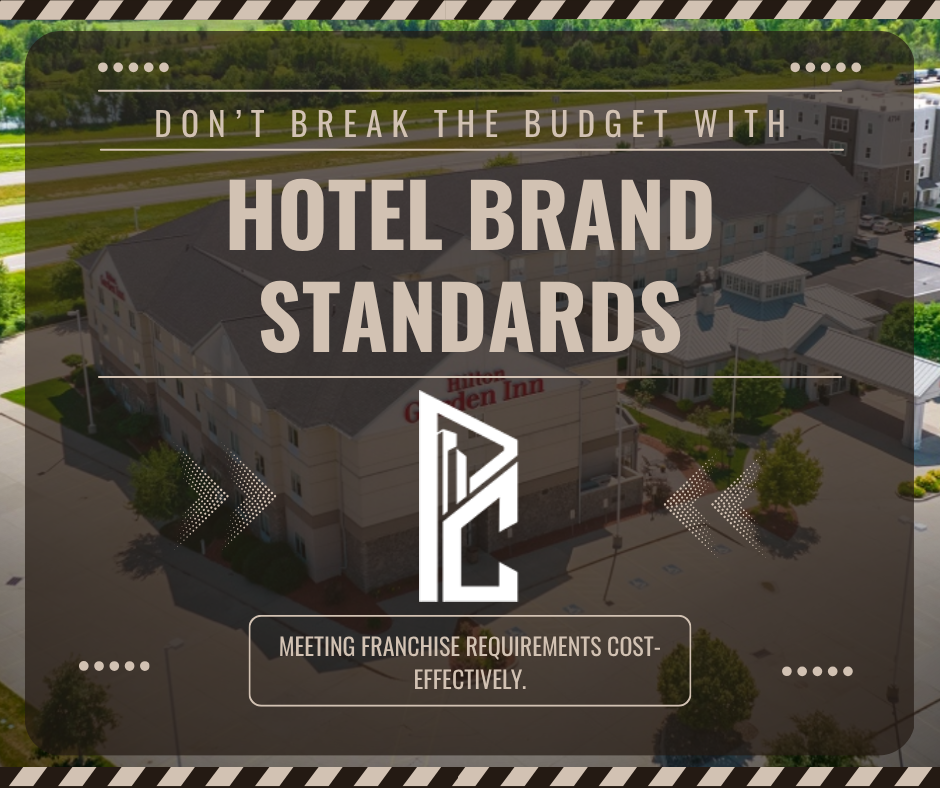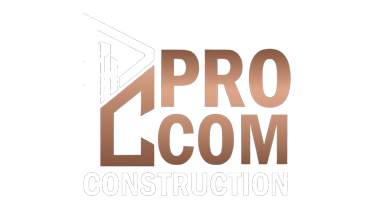
Meeting Hotel Brand Standards Without Breaking Your Budget
Hotel brand standards exist for good reasons—they protect brand identity, ensure guest experience consistency, and maintain property values. But if you’re staring at brand requirement lists that seem designed to drain every dollar from your construction budget, you’re not alone.
Brand standards have become increasingly demanding. What once focused on basic finishes now extends to technology infrastructure, sustainability features, and wellness amenities that can push projects significantly over budget.
The challenge isn’t whether to meet brand standards—that’s non-negotiable. The real question is how to satisfy requirements without financial devastation. After years of hotel construction nationwide across major brands, we’ve learned that meeting standards and maintaining budgets aren’t mutually exclusive goals.
Understanding What Brand Standards Actually Require
Brand standards documents can run hundreds of pages. The first mistake developers make is treating every line as equally mandatory.
The Hierarchy of Requirements
Hard Requirements include elements directly tied to brand identity: logos, color schemes, specific branded items, and guest-facing features. These rarely offer flexibility.
Performance Requirements specify outcomes rather than methods. Standards might require certain lighting levels or sound insulation ratings without mandating specific products. This is where smart contractors find savings.
Recommended Standards appear in brand documents but aren’t strictly enforced. Understanding which requirements fall into this category requires experience with brand approval processes.
Where Budget Overruns Actually Happen
The Approved Vendor Trap
Brand standards include approved vendor lists for everything from furniture to flooring. Many developers assume they must purchase directly from these vendors at whatever price is quoted.
The reality is more nuanced. Brands approve vendors based on product specifications and quality standards. Alternative suppliers often carry products meeting identical specifications at different price points.
Over-Specification
Brand representatives sometimes recommend premium options that exceed actual requirements. A brand might require commercial-grade carpet with specific durability ratings, while their representative suggests a luxury line costing forty percent more than alternatives meeting the same technical standards.
Technology Infrastructure Overbuilding
Modern hotel brands require robust technology infrastructure. Technology vendors often propose systems exceeding brand requirements, adding features and capacity the brand never mandated.
Strategic Approaches to Cost Control
Material Specification Analysis
Brand standards specify performance characteristics—durability ratings, appearance standards, maintenance requirements. Multiple products from different manufacturers often meet these specifications at varying price points.
Value Engineering During Design
The most effective cost control happens during design development, before construction begins.
Spatial Efficiency: Smart design maximizes efficiency within brand parameters, reducing overall building square footage and associated costs.
Systems Integration: Combining systems where possible reduces equipment and installation costs while meeting all brand requirements.
Material Selections: Choosing materials that satisfy multiple brand requirements simultaneously reduces overall costs.
The Brand Approval Process
Submitting Alternatives
Brands allow alternative products if they meet underlying requirements. The submission process requires documentation proving alternatives satisfy performance standards, appearance requirements, and durability expectations.
Contractors experienced with brand approvals know how to document alternatives effectively, increasing approval likelihood and reducing review times.
Timing Matters
Submitting alternatives early increases approval chances. Brands resist changes once plans are approved and construction begins.
Common Cost-Saving Opportunities
Furniture, Fixtures, and Equipment
FF&E represents a significant budget portion. Brand standards specify aesthetic requirements and durability standards but often allow sourcing flexibility.
Guest room furniture must match brand aesthetics and meet durability standards. Multiple manufacturers produce compliant options at different price points—sometimes hundreds of dollars difference per room.
Finishes and Surfaces
Flooring: Brands specify appearance, durability ratings, and maintenance characteristics. Various products meet these requirements at different costs.
Wall Finishes: Paint colors must match brand standards precisely, but paint quality can vary. Understanding which areas require premium paint versus standard commercial-grade controls costs without compromising appearance.
Building Systems
HVAC: Brand standards specify temperature control, noise levels, and air quality. Various system types achieve these outcomes. Right-sizing equipment and selecting efficient systems reduces both installation and operating costs.
What Not to Compromise
Guest-Facing Elements
Anything guests directly experience must fully satisfy brand standards. Lobbies, guest rooms, public spaces—these areas define brand identity and guest satisfaction.
Durability and Longevity
Choosing cheaper materials that fail prematurely costs more long-term than investing in appropriate quality upfront.
Code Compliance and Safety
Building codes and safety requirements are non-negotiable.
The Role of Experience
Successfully meeting brand standards within budget requires specific expertise that general commercial contractors often lack.
Brand-Specific Knowledge
Each hotel brand has unique priorities, approval processes, and flexibility points. Contractors who regularly work with specific brands understand these nuances, avoiding costly mistakes and delays.
Supplier Relationships
Experienced hotel contractors maintain relationships with suppliers across price ranges who carry brand-compliant products.
Approval Process Navigation
Understanding how to document alternatives, when to submit proposals, and how to communicate with brand representatives streamlines approvals and prevents rejections.
Planning for Success
Meeting brand standards affordably starts with proper planning before construction begins.
Comprehensive Budget Development: Accurate budgets account for all brand requirements from the start.
Early Brand Engagement: Engaging brand representatives early clarifies requirements and identifies flexibility points.
Contingency Planning: Adequate contingencies prevent minor issues from becoming budget crises.
The Bottom Line
Hotel brand standards protect franchise value and guest experience, but meeting them doesn’t require budget devastation. Success comes from understanding what brands actually require versus what they recommend, identifying cost-effective alternatives that satisfy requirements, and navigating approval processes effectively.
The difference between profitable hotel development and financial struggle often comes down to working with contractors who understand brand standards deeply and know where flexibility exists. Generic commercial contractors learning on your project will make expensive mistakes. Experienced hotel contractors prevent those mistakes before they happen.

